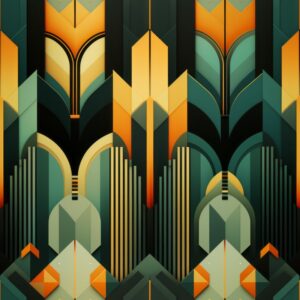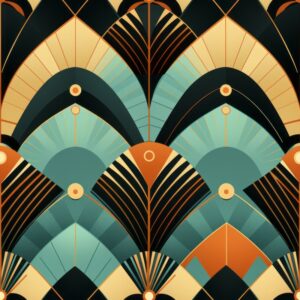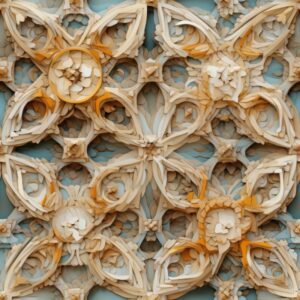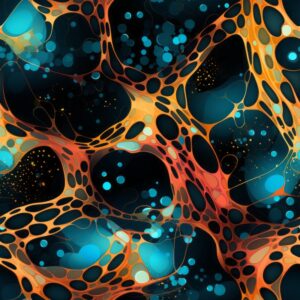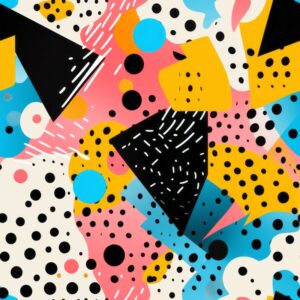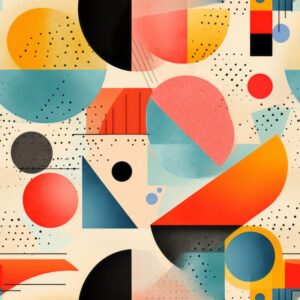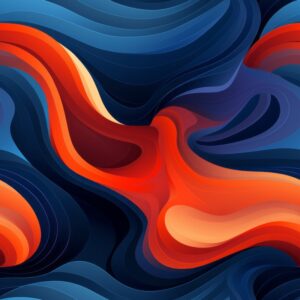No products in the cart.
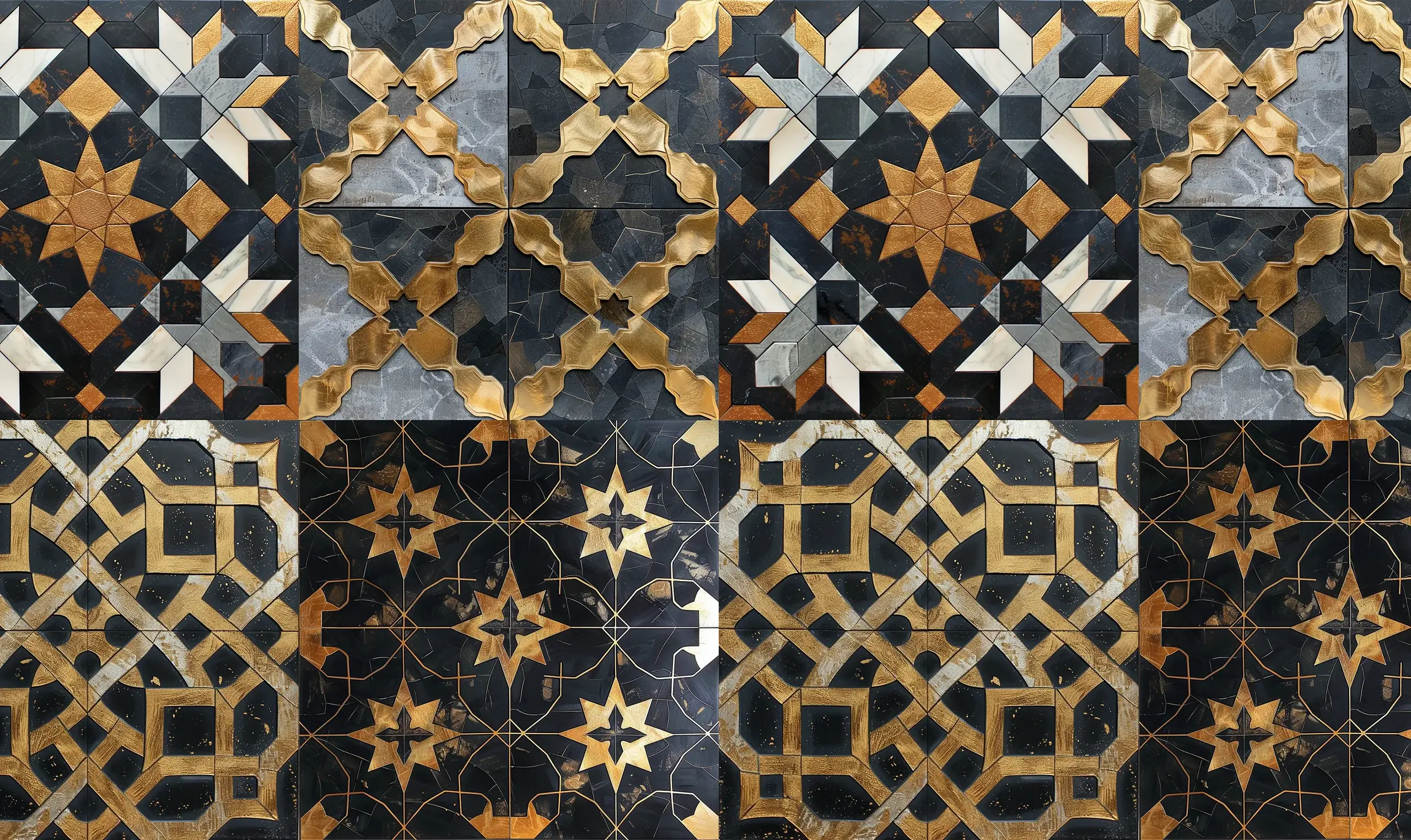
The Impact of Geometric Patterns on Fashion and Graphic Design
Geometric patterns are more than just eye-catching designs; they are steeped in history and rich in meaning. These patterns, comprised of shapes like circles, triangles, squares, and polygons, are organized into repeating motifs that play a crucial role in design. Historically, geometric patterns have been prominent in art and architecture, providing not only decoration but also symbolic significance. Each shape and symmetry used in these patterns can reflect cultural, spiritual, or philosophical ideas. In Islamic art, for example, recurring geometric patterns symbolize the infinite nature of creation. The Greeks associated the circle with perfection and eternity, evident in their fantastically precise circular motifs. This intertwining of deeper meanings with visual appeal makes geometric patterns particularly compelling.
Oriental Mountain Abstract Art
Experience the captivating allure of our "Oriental Mountain Abstract Art" seamless pattern design. Inspired by the beauty of mountains in an oriental style, this high-resolution fi
Geometry in Deco: Modern Art Pattern
Immerse yourself in the beauty of Art Deco with our "Geometry in Deco" seamless pattern design. Inspired by geometric forms and modern art, this high-resolution pattern brings vint
Deco-Geo Art: Geometric Inspired Paintings
Elevate your designs with our Deco-Geo Art seamless pattern. Inspired by the iconic Art Deco era, this high-resolution design features intricate geometric forms and a captivating c
Architectural Wood Kaleidoscope Pattern
Immerse yourself in the mesmerizing world of architectural symmetry with our Architectural Wood Kaleidoscope Pattern. This high-resolution seamless design, inspired by oil paint, s
The appeal of geometric patterns also lies in their inherent order and predictability. In a world that often feels chaotic, the clean lines and repeated motifs of geometric designs provide a visual haven of regularity and balance. This is achieved through the use of symmetry and tessellation, which are core principles in the construction of geometric patterns. Symmetry, where elements are mirrored or rotated in a balanced and equal manner, instills a sense of harmony and proportion. Tessellation takes this a step further, covering surfaces without any gaps or overlaps, much like fitting puzzle pieces together. These principles don’t just create aesthetically pleasing designs but also communicate a sense of stability and coherence, appealing universally across various design fields.
The production of geometric patterns has evolved dramatically with the rise of digital tools. Modern software allows designers to experiment with complex designs that would have been extremely time-consuming or impossible to create by hand. Digital design tools enable precise calculations and adjustments in patterns, facilitating the creation of intricate, scalable, and perfectly symmetrical designs. This technological advancement is not only a boon for designers but also enhances the versatility of geometric patterns. With digital technology, designers can easily manipulate scale, color, and form, creating patterns that can be tailored to a myriad of applications, from large-scale architectural facades to small-scale consumer goods.
Cellular Fusion Pattern
Discover the Cellular Fusion Pattern, a visually captivating seamless design that combines intricate cellular motifs. With its harmonious colors and delicate composition, this high
Abstract Memphis
Capture the spirit of Memphis design with our Abstract Memphis seamless pattern. A vibrant color paired with black and white elements creates a stunning composition perfect for fas
Geometry Collage Composition
Elevate your designs with this vibrant Collage-style geometry seamless pattern. Inspired by Cubist art, it blends various geometric shapes into a mesmerizing composition. Perfect f
Curved Motion Art
This striking Curved Motion Art seamless pattern design showcases wave-like curves in deep blue and fiery orange, adding a dynamic and captivating touch to any project. Elevate you
Modern Applications of Geometric Patterns
In contemporary design, the use of geometric patterns is both diverse and prolific, manifesting in areas from interior decor to fashion. In the realm of interior design, geometric patterns bring energy and dynamism to spaces through wallpapers and furnishings. Modern wallpapers often feature bold geometric prints that transform walls from mere backgrounds into focal points of rooms. These patterns are not just decorative; they can influence the perception of space and proportion, making rooms feel larger or more intimate depending on the scale and color of the designs.
In fashion, geometric patterns have found a particularly vibrant niche. They are used to create visual interest and rhythm in garments. Fashion designers leverage geometric motifs to play with the body’s contours and movement, creating illusions and highlighting features through strategic placement and sizing of patterns. Moreover, the versatility of geometric patterns allows them to be seamlessly adapted into various styles—from minimalist to avant-garde—ensuring they remain a staple in design arsenals.
Today, the fusion of traditional geometric patterns with modern digital techniques continues to push the boundaries of what can be achieved in design. Both wallpaper and fashion testify to the enduring appeal of geometric designs, as new technologies allow for ever-more innovative applications. Thus, these patterns are not only a nod to the human tendency to seek pattern and order but are also a testament to the boundless creativity enabled by the convergence of art and technology.
Modern digital techniques have revolutionized geometric patterns in fashion by giving designers the ability to create and manipulate patterns with precision and ease. With digital technology, designers can change the scale, color, and form of geometric patterns, allowing for endless possibilities and customization. This has resulted in more innovative and eye-catching designs in garments, ensuring that geometric patterns stay relevant and at the forefront of fashion.

